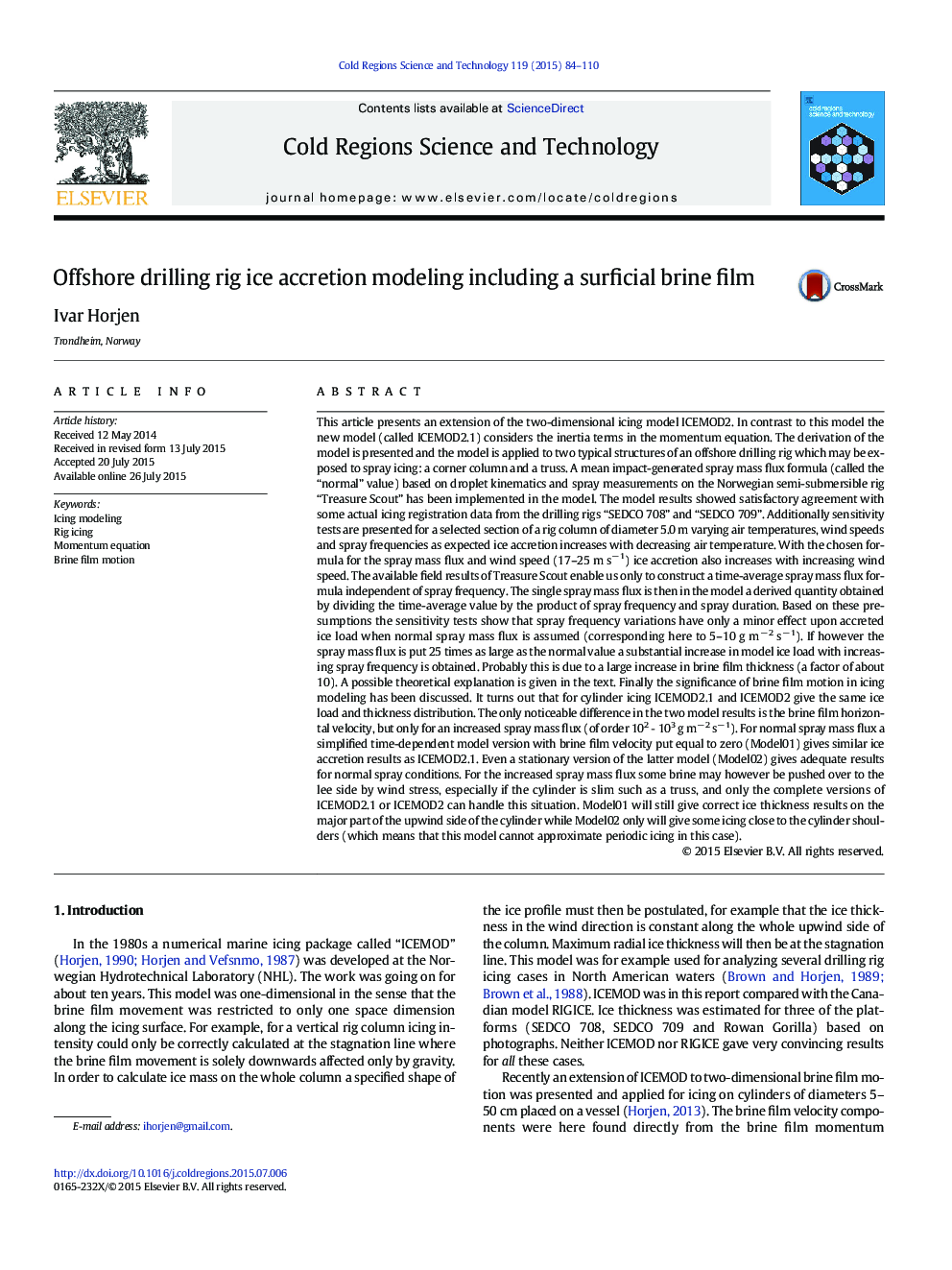| کد مقاله | کد نشریه | سال انتشار | مقاله انگلیسی | نسخه تمام متن |
|---|---|---|---|---|
| 6426752 | 1634445 | 2015 | 27 صفحه PDF | دانلود رایگان |
- An extension of the two-dim. sea spray icing model ICEMOD2 is presented.
- Model results are compared with field results from two semi-submersible oil rigs.
- Sensitivity analysis of the effect of varying three input parameters is presented.
- The effect of including brine film motion in icing modeling has been discussed.
- The main difference between the new and old ICEMOD2 is the brine film velocity.
This article presents an extension of the two-dimensional icing model ICEMOD2. In contrast to this model the new model (called ICEMOD2.1) considers the inertia terms in the momentum equation. The derivation of the model is presented and the model is applied to two typical structures of an offshore drilling rig which may be exposed to spray icing: a corner column and a truss. A mean impact-generated spray mass flux formula (called the “normal” value) based on droplet kinematics and spray measurements on the Norwegian semi-submersible rig “Treasure Scout” has been implemented in the model. The model results showed satisfactory agreement with some actual icing registration data from the drilling rigs “SEDCO 708” and “SEDCO 709”. Additionally sensitivity tests are presented for a selected section of a rig column of diameter 5.0 m varying air temperatures, wind speeds and spray frequencies as expected ice accretion increases with decreasing air temperature. With the chosen formula for the spray mass flux and wind speed (17-25 m sâ 1) ice accretion also increases with increasing wind speed. The available field results of Treasure Scout enable us only to construct a time-average spray mass flux formula independent of spray frequency. The single spray mass flux is then in the model a derived quantity obtained by dividing the time-average value by the product of spray frequency and spray duration. Based on these presumptions the sensitivity tests show that spray frequency variations have only a minor effect upon accreted ice load when normal spray mass flux is assumed (corresponding here to 5-10 g mâ 2 sâ 1). If however the spray mass flux is put 25 times as large as the normal value a substantial increase in model ice load with increasing spray frequency is obtained. Probably this is due to a large increase in brine film thickness (a factor of about 10). A possible theoretical explanation is given in the text. Finally the significance of brine film motion in icing modeling has been discussed. It turns out that for cylinder icing ICEMOD2.1 and ICEMOD2 give the same ice load and thickness distribution. The only noticeable difference in the two model results is the brine film horizontal velocity, but only for an increased spray mass flux (of order 102 â 103 g mâ 2 sâ 1). For normal spray mass flux a simplified time-dependent model version with brine film velocity put equal to zero (Model01) gives similar ice accretion results as ICEMOD2.1. Even a stationary version of the latter model (Model02) gives adequate results for normal spray conditions. For the increased spray mass flux some brine may however be pushed over to the lee side by wind stress, especially if the cylinder is slim such as a truss, and only the complete versions of ICEMOD2.1 or ICEMOD2 can handle this situation. Model01 will still give correct ice thickness results on the major part of the upwind side of the cylinder while Model02 only will give some icing close to the cylinder shoulders (which means that this model cannot approximate periodic icing in this case).
Journal: Cold Regions Science and Technology - Volume 119, November 2015, Pages 84-110
